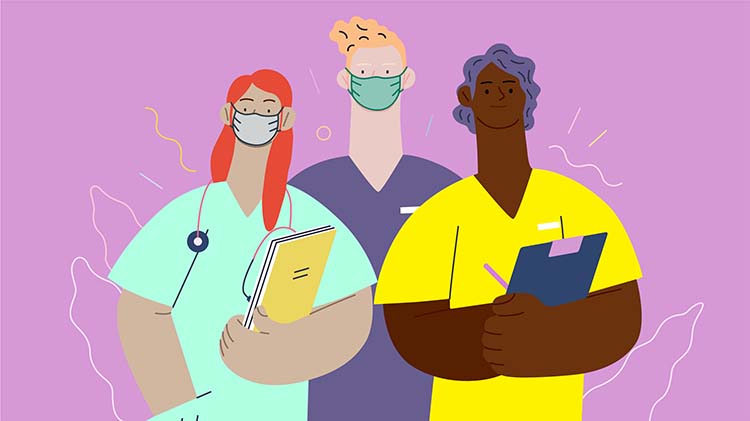The Code of Conduct for Doctors
07 Dec 2012

Three years after its introduction, it is timely to reflect upon the impact of the Code on the medical profession and the provision of medical care. Dr Sara Bird, Manager, Medico-legal and Advisory Services provides an update.
What is the purpose of the Code?
The stated purpose of the Code is to:
- describe what is expected of all doctors in Australia
- set out the principles that characterise good medical practice
- make explicit the standards of ethical and professional conduct expected by doctors by their professional peers and the community.
The Code is used as the basis upon which a doctor's professional conduct will be assessed and judged in the event of a notification or complaint to the Australian Health Practitioner Regulation Agency (AHPRA). In the event that a doctor's professional conduct varies significantly from the Code, the practitioner will be required to explain and/or justify their decisions and actions. Serious or repeated failures to meet the requirements outlined in the Code are likely to result in disciplinary action being taken against the doctor.
Our Medico-legal Advisory Services team regularly refers to the Code when providing advice to Members about specific medico-legal questions and issues.
What is included in the Code?
A wide range of professional issues are covered in the Code as outlined in Table 1.
It is important to be aware that some of the requirements under the Code are quite prescriptive. For example the Code states:
3.10 Adverse events When adverse events occur, you have a responsibility to be open and honest in your communication with your patient, to review what has occurred and to report appropriately. When something goes wrong, good medical practice involves:
3.10.1 Recognising what has happened.
3.10.2 Acting immediately to rectify the problem, if possible, including seeking any necessary help and advice.
3.10.3 Explaining to the patient as promptly and fully as possible what has happened and the anticipated short-term and long-term consequences.
3.10.4 Acknowledging any patient distress and providing appropriate support.
3.10.5 Complying with any relevant policies, procedures and reporting requirements, subject to advice from your medical indemnity insurer.
3.10.6 Reviewing adverse events in implementing changes to reduce the risk of recurrence.
3.10.7 Reporting adverse events to the relevant authority, as necessary.
3.10.8 Ensuring patients have access to information about the processes for making a complaint (for example, through the relevant health care complaints commission or medical board).
| TABLE 1 | ||
| Providing good care
Working with patients
|
Working with other health care professionals
Working within the health care system
Minimising risk
Maintaining professional performance
Teaching, supervising and assessing
|
Professional behaviour
Ensuring doctors’ health
Undertaking research
|
Discussion
In the Autumn 2010 edition of Defence Update , we outlined the reservations expressed by Professor Komesaroff and A/Professor Kerridge about the draft Code.2 In particular, the authors noted the draft Code was based on “a narrow culturally specific view of medicine and ethics that does not reflect the multicultural diversity of Australian society”. The authors went on to state that it “contributes to an insidious, creeping authoritarianism that – at least in the case of medical practice – threatens to erode the core values of a culture that has developed over many years”. Other commentators have asserted that this contention is “mistaken” and “there has always been room for discretion and for context to be taken into account” when using the Code to judge a doctor’s conduct.3
While it remains to be seen if the Code will provide appropriate guidance or contribute to an erosion of core professional values, all Members are encouraged to ensure they are familiar with its content, and to consider and reflect upon the application of the Code in their own practice. What do you think? Share your comments with us.
1 Good Medical Practice: A Code of Conduct for Doctors in Australia. Available at: medicalboard.gov.au/Codes-Guidelines-Policies/Code-of-conduct.aspx
2 Komesaroff PA, Kerridge IH. The Australian Medical Council draft code of professional conduct: good practice or creeping authoritarianism? Med J Aust 2009; 190:204 – 205.
3 Parker M. Normative lessons; codes of conduct, self-regulation and the law. Med J Aust 2010; 192:658-660.
Professional boundaries in healthcare - Part 1
Boundaries with patients present in numerous ways every day and all health practitioners
11 Aug 2025
Understanding Professional Medical Indemnity Insurance
Do you understand the ins and outs of professional medical indemnity insurance?
11 Aug 2025
Professional boundaries in healthcare - Part 2
Boundaries with patients present in numerous ways every day and all health practitioners
11 Aug 2025
Understanding changes to the Fair Work Act
What are the changes to the Fair Work Act and what is my role?
22 Jul 2025






